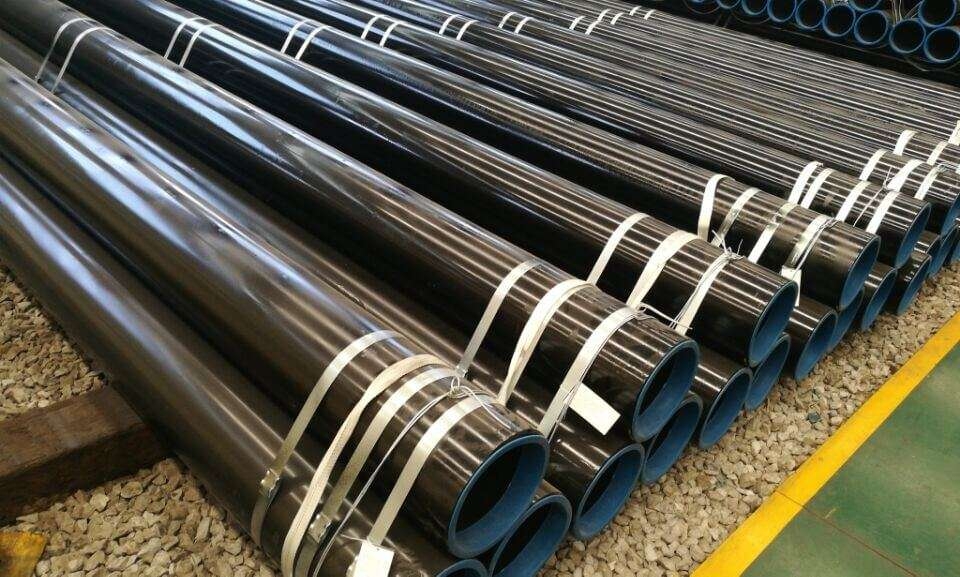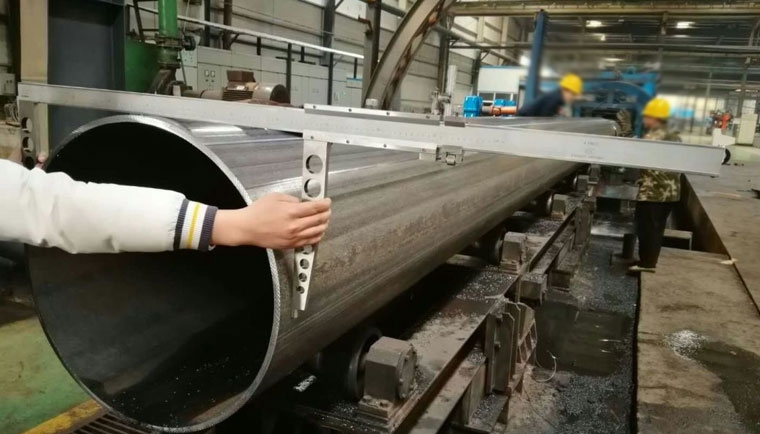Flowing Solutions: Exploring the X52 Pipe
Pipelines play a crucial role in numerous industries, including oil, chemical, water conservancy, and construction. These systems are vital for the efficient transport of fluids and gases, ensuring a stable supply and operational continuity. Among the various types of pipelines, the X52 Pipe is notable for its robust performance in harsh environments. Cangzhou Shenlong, a seasoned manufacturer with over 30 years of experience, specializes in producing steel pipes and fittings. Adhering strictly to the ISO9001 system, Cangzhou Shenlong maintains a 100% qualification rate over five years, with a global presence in the Middle East, Europe, Africa, and America. Our products are indispensable in oil exploration, chemical industries, and more, reflecting a legacy of quality and reliability.
Understanding Pipelines
Definition and Types of Pipelines
Pipelines are tubular systems designed for the efficient transport of liquids, gases, and slurries from one location to another. They vary based on the materials transported and the environmental conditions of their use. Common types include oil and gas pipelines, water pipelines, and chemical pipelines, each tailored with specific materials and designs to handle the pressures and chemical nature of their contents.
Role of Pipelines in Transportation and Distribution
Pipelines are integral to the transportation sector, providing a cost-effective and safe method for distributing a variety of substances over long distances. Unlike road and rail transport, pipelines can continuously deliver large volumes of oil, natural gas, or chemicals directly to processing facilities, power plants, or urban water systems, minimizing the need for intermediate handling.
Key Components of Pipeline Systems
A typical pipeline system comprises several key components: pipes, pumps or compressors, valves, control stations, and metering stations. Pipes form the backbone, while pumps and compressors are used to maintain flow under pressure. Valves regulate the flow and redirect the contents as needed, and control stations monitor and manage operational parameters to ensure safety and efficiency.
Introduction to the X52 Pipe
Background and Development History
The X52 Pipe is a grade of API 5L pipe specification commonly used in the oil and gas industry. Developed to meet stringent requirements for strength, durability, and environmental resistance, X52 pipes are part of a classification system that has evolved over decades to address the industry's dynamic demands.
Material Composition and Properties
X52 Pipes are manufactured from a carbon steel alloy optimized for high tensile strength and flexibility. They typically contain iron, carbon, manganese, phosphorus, sulfur, and silicon. This composition provides a good balance of ductility, hardness, and toughness, making them ideal for high-pressure applications.
Applications and Industries where X52 Pipes are Used
X52 Pipes are predominantly used in the oil and natural gas industry, particularly for transmitting large volumes of petroleum products and natural gas. Their strength and flexibility also make them suitable for other harsh environments, such as in chemical transportation and water infrastructure projects, where durability and safety are critical.
Engineering and Design
Structural Design Considerations
When designing pipeline systems, engineers must consider factors such as the type of material being transported, environmental conditions, potential stressors, and regulatory requirements. For X52 pipes, this includes ensuring the thickness and diameter are sufficient to handle the operating pressures without risking pipeline integrity.
Corrosion Resistance and Durability
Corrosion resistance is a critical attribute for pipelines, especially those exposed to harsh environmental conditions or corrosive substances. X52 Pipes are often coated with protective materials and can also be treated with corrosion inhibitors to enhance their longevity and maintain their structural integrity over time.
Pressure and Temperature Capabilities
X52 Pipes are engineered to perform under high pressures and varying temperatures, making them suitable for a wide range of applications. They can withstand the high pressure of underground gas reservoirs and the thermal dynamics of different climates, ensuring reliable performance and safety in their operations.
Manufacturing Process
Overview of Manufacturing Steps
The manufacturing of X52 pipes involves several critical steps. It begins with the selection of raw materials, typically high-quality steel alloy sheets. These sheets are then molded into pipe shapes, either through seamless rolling or welding. After shaping, the pipes undergo heat treatment to enhance their strength and toughness. The final steps include finishing processes such as surface treatment, cutting to length, and end finishing, preparing the pipes for their specific installation needs.
Quality Control Measures
Quality control is paramount throughout the manufacturing process of X52 pipes. This includes rigorous testing for dimensional accuracy, material composition, and mechanical properties such as tensile strength, ductility, and hardness. Non-destructive testing methods, such as ultrasonic and radiographic tests, are employed to detect any internal flaws. Manufacturers also adhere to international standards such as ISO9001 to ensure consistent quality and reliability.
Environmental and Safety Considerations
Manufacturers of X52 pipes are increasingly focusing on minimizing environmental impact and enhancing safety. This involves using recycled materials where possible, reducing emissions and waste during production, and implementing strict safety protocols to protect workers from occupational hazards. The use of advanced manufacturing technologies also plays a role in reducing the environmental footprint of production processes.
Installation and Maintenance
Techniques for Pipeline Installation
Installing pipelines involves several techniques depending on the environment and the product being transported. Trenchless technology, for example, is used to install pipelines without extensive excavation, which minimizes environmental disruption. For offshore pipelines, methods such as lay barges are employed. Proper alignment, welding, and testing are critical steps to ensure the integrity of the pipeline once in service.
Inspection and Maintenance Protocols
Regular inspection and maintenance are crucial for the longevity and safety of pipeline systems. Techniques such as pigging, where a device is sent through the pipeline to clean and inspect the interior, are commonly used. Other methods include visual inspections, pressure tests, and the use of robotic inspection devices to identify and rectify potential issues like corrosion or leaks.
Challenges and Solutions in Maintenance
Maintenance of pipelines can present challenges such as accessibility, especially for underground or underwater pipelines. Advanced robotics and remote sensing technologies have emerged as solutions, allowing for less intrusive and more frequent inspections. Predictive maintenance techniques are also being developed, using data analytics to predict and prevent failures before they occur.

Case Studies
Real-World Examples of X52 Pipe Applications
One notable application of X52 pipes is in the Trans-Alaska Pipeline System, which spans over 800 miles. Despite harsh environmental conditions, X52 pipes have demonstrated exceptional performance in terms of durability and reliability, transporting large volumes of crude oil.
Success Stories and Challenges Faced
In the Middle East, X52 pipes have been used extensively in the oil sector. These pipes have successfully handled extreme temperatures and abrasive materials, though challenges such as sand erosion and political instability have tested their limits. Innovative coating techniques and improved installation methods have been developed in response.
Lessons Learned and Best Practices
Case studies have highlighted the importance of continuous monitoring and adaptive maintenance strategies. Best practices now include regular training for maintenance personnel, investment in high-quality materials, and the adaptation of technology to enhance monitoring and safety measures.
Future Trends and Innovations
Emerging Technologies in Pipeline Engineering
The future of pipeline engineering is likely to be shaped by advancements in material science and data analytics. Smart sensors and IoT applications are being integrated into pipeline systems, enabling real-time monitoring and control.
Potential Advancements in X52 Pipe Design and Materials
Research is ongoing into the development of higher-grade materials that can withstand more extreme conditions and pressures. Innovations in alloy composition and new manufacturing techniques could lead to even more resilient and efficient pipelines.
Environmental Sustainability in Pipeline Operations
Sustainability is becoming increasingly crucial in pipeline operations. Future trends include the use of more environmentally friendly materials and the integration of green technologies such as solar-powered monitoring systems. The industry is also moving towards more sustainable water management practices and reduction of carbon footprints across the lifecycle of pipelines.
Final Words
Pipelines, particularly X52 pipes, are indispensable in facilitating the efficient transport of essential resources across various industries. As we've explored, the rigorous manufacturing processes, installation techniques, and maintenance protocols ensure that these pipelines operate reliably and safely. Through real-world applications and continual technological advancements, the pipeline industry is not only meeting current demands but also innovating for future challenges. The focus on environmental sustainability and the integration of emerging technologies signify a proactive approach to enhancing pipeline operations and minimizing ecological impact. The ongoing improvements in materials and design promise to further optimize these critical infrastructures, ensuring their resilience and efficiency for years to come.






